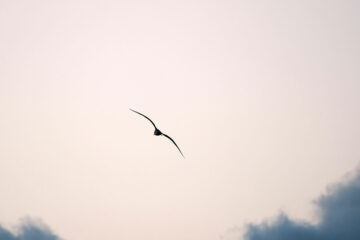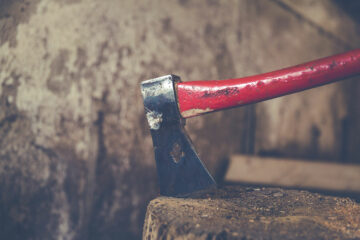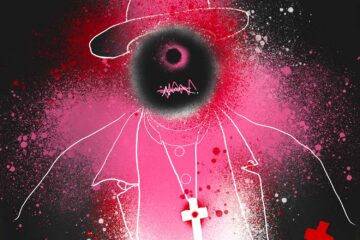Overview: In this short solo episode (Ep. 124), Adam Williams sorts out some truths of being creative, like facing insecurities with courage and cultivating confidence. He cites Dutch artist, curator and designer Erik Kessels’ book “Failed It!” and reflects on Kessels’ belief that insecurity is essential to confidence.
Also on Apple, Spotify, Pandora, Stitcher, YouTube, Google and other players.
EP 124 SHOW NOTES, LINKS & TRANSCRIPT
Connect with Adam Williams
Humanitou Blog
Instagram: @humanitou
About Adam
Art Credits
Podcast cover art: Adam Williams
Intro/Outro Music
“Old Rope” by Joe Johnson | joejohnsonsings.com
Original Written Version
I’ve been thinking again about a few lines I’ve mulled over for years and sort of carried around like personal truisms in my pocket:
Questions often are more intriguing than answers.
Art that sparks imagination (and questions) is more compelling than art that is obvious (provides answers). Except when it isn’t.
Oopses can be life-giving pivot points when creating. Knowing which ones to keep is an art form in itself.
But: Confidence is overrated? And insecurity is a boon for creativity?
Erik Kessels, the Dutch artist, designer and curator, co-founder and creative partner of KesselsKramer, wrote in his book, “Failed It!”:
“We all like to project confidence. We think we must project confidence. We assume it’s a prerequisite for success. But when it comes to creativity, it’s actually insecurity that’s essential.
…
“Would The New York Times have recently wondered if ‘self-loathing is a requirement for writers’ if success demanded confidence? No, because they understand that great ideas are often germinated by crippling insecurity.
“Great ideas come from doubting them, interrogating them and allowing other possibilities to take root. It can be a risky business, all this thinking, but take the risk. The creative process is like panning for gold.
…
“Don’t let your insecurities overwhelm you. … Insecurity is one of your most valuable assets.”
That’s comforting. And yet it feels insufficient, if I walk away from Kessels’ thoughts without giving them more reflection. I don’t want to foster the inner drama of “crippling insecurity,” but I’m willing to examine and work with the useful attributes of the insecurity that’s there. So …
Questions on my mind: What is the honest balance of insecurity and confidence that I carry? What work might I need to do in fostering the balance that best serves me and my work? How can I cultivate a healthy emotional state while furthering my work, and while retaining the helpful qualities Kessels is referring to about insecurity?
I have long held doubts about the old(?) idea that writers somehow were better off as emotionally contorted, brooding, self-loathing, alcoholic, mercurial artists. I would think, “Wouldn’t they (and their family and friends) be better off if they stopped drinking, etc.? Wouldn’t it be better to resolve the issues and then work from a healthier, clearer-eyed place than to foster self-destruction in the name of art?”
It has seemed like a shame to me to enable such stories and behaviors, as if the drugs and alcohol hold the genius rather than the soul within the writer, or any artist.
So, I’m grateful to Kessel assuring me/us of the positives that come from insecurities. It is more upbeat to see them as useful rather than neurotic, self-made obstacles to doing my work.
I think overly confident, boisterous, full-steam-ahead people appear to function without much if any self-reflection, without the consideration that Kessels is referring to as a natural response to our insecurities. (But those also are the artists, thoughtfully effective or not in their work, who are loud, draw attention to themselves and, ultimately, thrive publicly and financially, so … there’s that.)
Self-reflection then, thoughtful weighing of ideas without crippling ourselves through overthinking and fear, seems to be the balance of insecurity and confidence. It’s a balance between uncertainty and trusting what we think we know, and being willing to leap.
I’m not trying to fashion truisms, but there is value in distilling ideas to their essence. Here, I am processing confidence and insecurity as collaborators in the creative work we do, boiling it, boiling it:
Confidence is knowing when the thoughtful work of our insecurities has been sufficient, and then being willing to leap.
Our insecurities ready the parachute. Confidence is the courage to exit the plane, trusting the chute will open.
Our insecurities ready the parachute. Confidence is trusting the chute will open.
Insecurities ready the parachute. Confidence trusts the chute will open.
Insecurities ready the parachute. Confidence trusts it’ll open.
…
That works. For now anyway. “Insecurities ready the parachute. Confidence trusts it’ll open.”
All we can ever do is the work. The rest is out of our hands. That’s the vulnerable stuff, the basis of insecurities, that when the work (ourself) is exposed, we’ll find out elsewhere that it wasn’t enough. That’s why we self-sabotage and try to kick ourselves preemptively, beat ourselves up first and worst.
That way, if our feared critic ever shows up and says, “That sucks and you suck,” we can say, “Yeah, I already know.” Jeebus, that’s sad to even fictionally write. Yet it’s what I do to myself all too often, on some level. You?
Confidence isn’t absolutely knowing it’s “right” or “good enough.” It’s having the courage to make and share the work at all. Confidence isn’t certainty, it’s courage.
Insecurities ready the parachute. Confidence (courage) trusts it’ll open.



